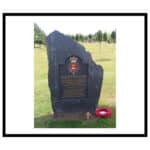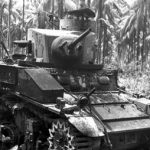At the end of hostilities in May 1945, the 7th Hussars would find themselves in Northern Italy equipped with Amphibious M4 Shermans and Valentine tanks which they had used to great effect crossing the river Po and the canals of Venice. With the war still raging on in the Far East the Regiments amphibious tanks were withdrawn in preparation for any possible invasion of Japan.
This would see the Regiment being re-equipped with the Churchill Infantry tank, which had proven itself as a great tank in mountainous areas and would prove a useful asset to patrol and deter any disaffected Fascist or Nazi taking up arms again.
In June 1946 the Regiment marched north to Soltau, in northern Germany, as part of the occupying Army. They would be re-equipped with the Comet tank which would be their main platform from 1946 and into the 1950’s.

The origins of the Churchill’s design lay in the expectation that war in Europe might be fought in conditions similar to those of the First World War, and thus emphasised the ability to cross difficult ground.
The Churchill was hurried into production in order to build up British defences against a possible German invasion. The first vehicles had flaws that had to be overcome before the Churchill was accepted for wide use.
After several marks had been built, a better-armoured specification, the Mark VII, entered service with the British Army. The improved versions performed well in the later stages of the war.
The Churchill was used by British and other Commonwealth forces during the North African, Italian and North-West Europe campaigns. In addition, the RTR dispatched a Squadron to Korea in 1950-51 which served alongside the 8th Hussars and 29 Brigade.
Pictured are Churchills of ‘B’ Squadron 7th Queen’s Own Hussars, in Trieste Italy, May 1946 from Frank Gardiner’s collection.



